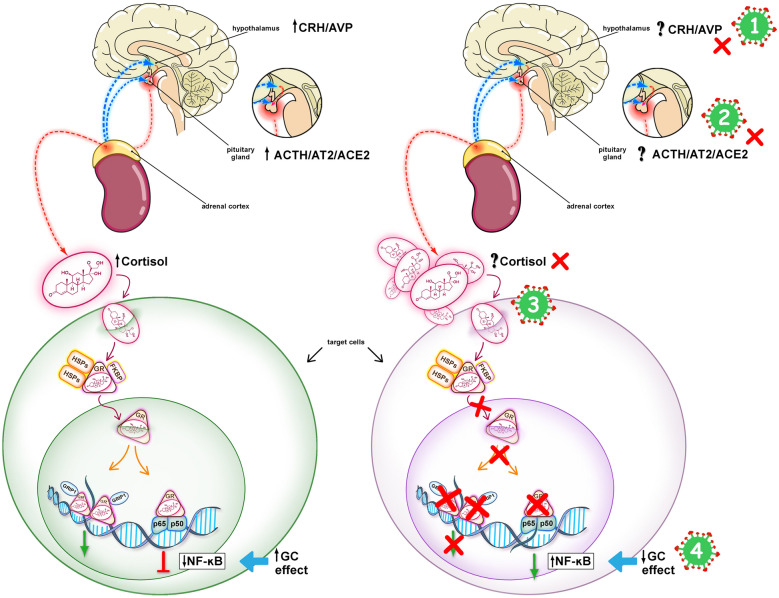Fig. 1.
Hypothalamic–pituitary–adrenal (HPA) response in COVID-19. The left panel shows an intact HPA axis response to stress leading to the downregulation of NF-kB. The right panel shows mechanisms potentially involved in an impaired HPA axis response to stress in COVID-19. COVID-19 may be associated with CIRCI, as a result of inhibition of the hypothalamic–pituitary–adrenal (HPA) axis at any or all of its levels, as shown by the red X’s: (1) Hypothalamus (CRH/AVP), (2) pituitary gland (ACTH/AT2/ACE2), (3) adrenal cortex (cortisol), and (4), target tissues (Glucocorticoid receptor signaling system). In CIRCI, target tissue resistance to glucocorticoids may occur even in the presence of elevated levels of circulating cortisol. SARS -CoV-2 has an epitope that binds the ACE2 enzyme facilitating entry into host cells, which might influence the function of the HPA axis at level (2). SARS-CoV-2 may have an ACTH-mimic peptide that could act as an agonist or antagonist at the ACTH receptor at level (3). Prolonged glucocorticoid treatment is indicated when cortisol production and/or target tissue sensitivity to cortisol are compromised (Online Supplement for Supplementary References). CIRCI Critical illness-related corticosteroid insufficiency, CRH corticotropin-releasing hormone, AVP arginine-vasopressin, ACE2 angiotensin-converting enzyme 2, AT2 angiotensin 2, ACTH corticotropin, GR glucocorticoid receptor–alpha, HSP heat shock protein, FKBP immunophilin, GRIP1 coactivator, p65/p50 nuclear factor (NF)-kB

